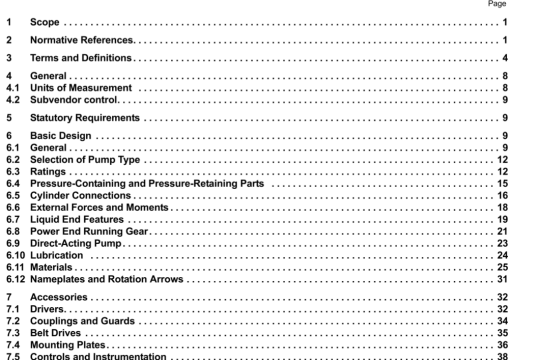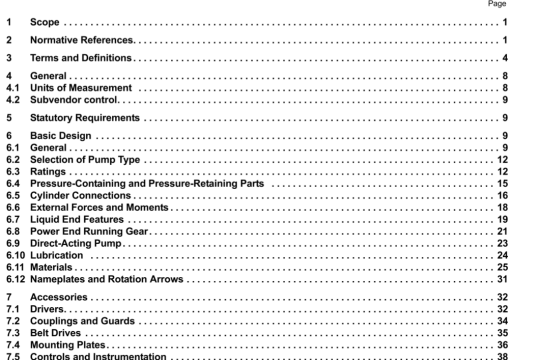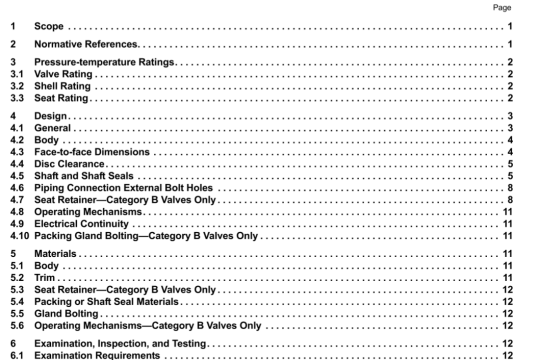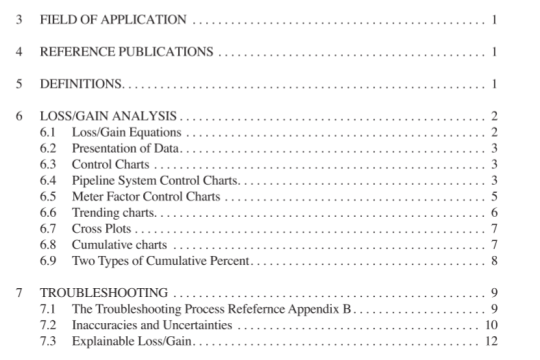API RP 2SM:2001 pdf download
API RP 2SM:2001 pdf download.Recommended Practice for Design,Manufacture, Installation, and
Maintenance of Synthetic Fiber Ropes for Offshore Mooring.
4.6.10.2 UV Resistance
Polyester ropes have excellent resistance to UV light, and jacket design need not take account of this aspect. Uncovered aramid ropes may sufkr degradation of surface yams if exposed to U’s’ radiation awaiting installation or if pernianently deployed, uncovered, in the upper few metres of water. In such cases an opaque cover is recommended.
4.6.10.3 Marine Growth
Minor strength loss in synthetic fiber ropes caused by marine growth or its by-products has been reported. Marine organisms with hard shells can grow between the rope jacket and the load bearing core and cause abrasion damage to core yarns. Soft marine growth may limit visibility and hence affect the ability of an ROV to inspect the rope. Marine growth may also influence the drag loading on the line and hence loadings on the whole mooring system. For operations where marine growth is a concern, the fiber ropes should be placed below the marine growth tone. If marine growth is to be removed mechanically this should be done in such a way that damage to the rope itself is avoided.
4.6.11 Snap Back at Failure
Considerable energy will he stored elastically in the ten. stoned lines of a taut leg mooring and the safety implications for the crews and equipment. especially during handling and installation if one of the lines was to break, should be consid
4.6.12 Effect of Water Depth
At 2JXX) m (6,560 ft) depth, the hydrostatic pressure is 20 MPa (2.900 psi), which is about 2% of the strcnzth of polyester or nylon yams and a smaller fraction of the strength of the other yarns. This would have a negligible etlct on yam mechanical properties, and would only be responsible for a small transverse strain and the accompanying axial strain on a rope.
5 Mooring Design and Analysis
5.1 GENERAL
This section is based on the recommendations given in API RP 2SK Ill, Sections 4 through ft. Modifications needed to cover the case of synthetic fiber rope mooring lines are provided below.
5.2 MOORING CONFIGURATiON
A mooring system with synthetic fiber ropes can be config. ured as either a taut-leg or a catenary system. The choice depends on many considerations which are beyond the scope of this document. A taut-leg mooring (Tl..M) has a smaller moonng fooprint than the conventional catenary mooring system. This can he particularly important for the field layout of production installations in congested development areas. The taut leg mooring systems also differ From conventional catenary moored systems in that the anchor must resist substantial vertical load.
5.3 DESIGN CRITERIA
5.3.1 Maximum Tension Limits
Maximum tension limits and factors of safety for tlber rope should be the same magnitude as for steel and thus in accordance rith 6.3.2 of API RP 2SK Ill. hut with the breaking strength of the new rope defined as MBS as in 4.6.2 of this document.
5.3.2 Minimum Tension and Maximum Allowable Low Tension Cycles
The previous requirnient for minimum tension and maximum number of low-tension cycles is no longer applicable to polyester fiber ropes as they are not susceptible to axial compression fatigue.
As a general guideline for aramid ropes during installation and throughout the service life of the mooring line, tension should not drop below 10% MHS more than 541) times. Fiber ropes may be designed to sustain more cycles or lower tensions than indicated above before severe strength loss occurs. However, test data should be provided for justification of relaxing this general guideline.
5.3.3 FatIgue
As recommended in API RP 2SK Ill fatigue design is required fir permanent moorings only. For synthetic fiber ropes. a safety factor of ten times of the design service life should he used for ropes under tension-tension fatigue loads.
5.3.4 Creep Rupture
The following discussion only applies to HMPE rope mooring lines.
Creep rupture can be caused by cumulative. irrecoverahk elongation of a fiber rope under load. The factor of safety for creep rupture is defined as the predicted creep rupture life divided by service life of the mooring system.




